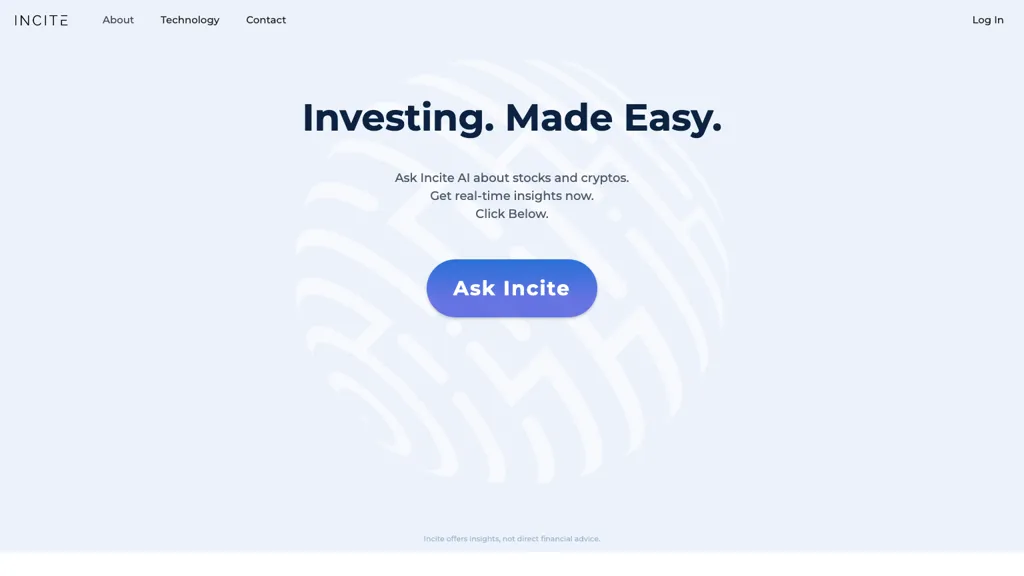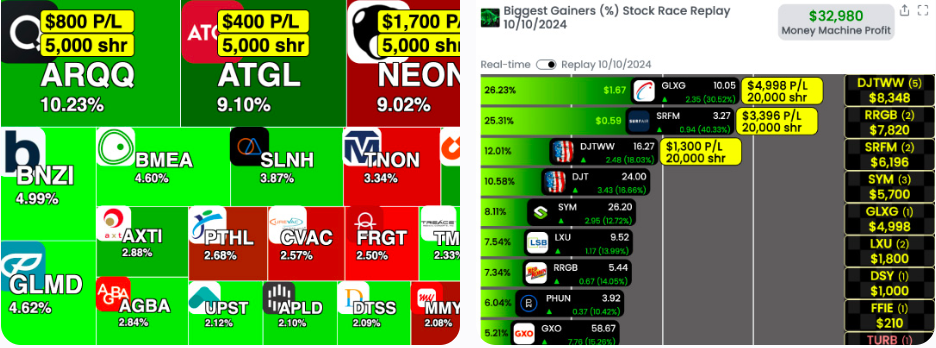20 Recommended Ideas For Selecting AI Stock Trading Platform Sites
20 Recommended Ideas For Selecting AI Stock Trading Platform Sites
Blog Article
Top 10 Suggestions On How To Assess The Strategy Customization Of Ai Trading Platforms
Strategy customization is a key feature of AI platform for predicting and analyzing stocks, as it allows users to adapt the platform to meet their particular trading needs as well as their risk tolerance and market conditions. A platform with a wide range of customization features will enhance your trading. These are the top 10 ways to evaluate the ability of platforms to customize their strategies:
1. Evaluate Pre-Built Strategy Templates
A variety of templates: See if the platform offers various pre-designed strategies for different trading styles (e.g., swing trading, day trading, long-term investing).
Easy to use: Check the ease of use required to use and alter these templates to suit your needs.
Performance history: Make sure that the platform contains previous data on performance that can be used to create the strategic plans that have been pre-built.
2. Assessment Custom Strategy
Drag-and-drop tools Find platforms that have intuitive drag-and-drop interfaces for creating unique strategies.
Coding options: For advanced users, check if the platform supports custom-written coding in a scripting language that is proprietary (e.g. Python, R).
Flexibility: Make sure the platform permits you to establish entry and exit rules as well as risk management parameters and other essential elements of your strategy.
3. Check for Backtesting Capabilities
Historical data: Verify that the platform has enough historical data available to backtest strategies.
Flexible settings: Ensure you have the capability to modify settings during backtesting.
Performance metrics - Check to see if your software has specific performance indicators (e.g. the win rate, Sharpe coefficient or drawdown) for all backtested strategies.
4. Evaluate Real-Time Strategy Testing
Paper trading: Ensure that the platform allows you to play around with your strategies or to test them without risking any money.
Live testing Try your strategies out in live markets with tiny amounts of capital to evaluate their performance.
Real-time adjustment: Determine if it is possible to alter strategies in response to current market conditions.
5. Assess Integration with Technical Indicators
Indicator library: See whether the platform provides an extensive library of technical indicators (e.g., moving averages, RSI, MACD).
Custom indicators. You must ensure that you are able to design or implement customized indicators as part of your strategy.
Verify the indicators' combination.
6. Check for Risk Management Tools
Stop-loss/take-profit: Ensure the platform allows you to set stop-loss and take-profit levels within your strategies.
Position sizing - Check for any rules you could follow (e.g. a fixed amount or a percentage of your portfolio) to control the risk.
Risk-reward: Find out if your platform allows you to set risk-reward for each strategy or trade.
7. Evaluate Multi-Asset Strategy Support
Asset Classes: Check that the platform supports strategies that are based on multiple asset types (e.g. ETFs Forex, Options, Stocks).
Cross-asset strategies: Determine if you are able to create strategies that include various types of assets (e.g. pairs trading or hedges, etc.).
Market coverage. Make sure the platform covers the markets that you're looking to invest in (e.g. US international, copyright).
8. Review the automation and Execution
Automated trading - Ensure that the platform is capable of automating strategies that are based upon predefined rules.
Order types: Check whether the platform can support different kinds of orders (e.g., limit, market, stop) to execute a strategy.
Latency: Check that the platform is able to perform trades that have minimal latency especially for high-frequency strategies.
9. Look for strategies optimization tools
Optimization of parameters: Make sure the platform offers tools to optimize the parameters of your strategy (e.g., grid search, genetic algorithms).
Machine learning integration. Check whether your platform is compatible with machine learning capabilities to enhance and improve strategies.
Scenario analysis: Verify whether the platform permits testing strategies in different market conditions (e.g., bull, bear or volatile).
10. Review User Feedback and Community Support
Feedback from users is essential to assess the performance of a platform.
Community forums - Search to see if the platform has a community which is active and where users can share their own strategies.
Support resources: Make sure the platform provides tutorials, webinars, or other documentation that will help users develop and improve their strategies.
Bonus Tips
Trial period: Test the features of the platform to customize your experience without cost with a demo or demo.
Scalability: Make sure the platform is able to handle more complicated strategies as your trading evolves.
Support for customers: Find out whether the platform offers assistance with strategy-related issues or concerns.
With these suggestions you will be able to effectively evaluate the strategy customization capabilities of AI platforms for analyzing and predicting stocks, ensuring you choose one that matches your objectives in trading and permits you to implement and refine your strategies effectively. A platform with robust customization capabilities can allow you to adjust to changing market conditions and enhance your trading performance. Follow the best my sources about options ai for more info including ai investing app, ai chart analysis, ai investment platform, ai stock trading, ai stock, best ai trading app, ai for stock trading, ai for trading, best ai for trading, best ai stock trading bot free and more.
Top 10 Tips For Assessing The Scalability And Accuracy Of Ai-Based Stock Trading Platforms
In order to ensure that AI-driven trading platforms and prediction systems can handle the increasing quantity of data, user requests and market complexity it is crucial to assess their scalability. Here are 10 best strategies for evaluating scaling.
1. Evaluate Data Handling Capacity
Tips : Find out whether the platform is able to analyze and process huge databases.
Why is that? Scalable platforms must be able to handle the growing data volumes with no performance degradation.
2. Test the Real-Time Processing Capability
Find out how the platform handles live data streams, such as news and stock prices.
Why: Analyzing in real-time is crucial for trading decisions, and delays can lead to missed opportunities.
3. Check for Cloud Infrastructure and Elasticity
TIP: Check whether the platform is cloud-based infrastructure (e.g., AWS, Google Cloud, Azure) and has the ability to scale resources in a dynamic manner.
Why? Cloud platforms are flexible, and can be scaled up and down in response to the requirements.
4. Algorithm Efficiency
Tips: Assess the efficiency of computation in AI models (e.g., deep learning or reinforcement learning) employed to predict.
Reason: Complex algorithmic structures can consume a lot of resources. Making them more efficient is the most effective way to scale.
5. Examine Parallel Processing and distributed computing
Make sure the platform is using parallel computing or distributed computing frameworks.
What are they: These technologies speed up the processing of data and allow for analysis across many nodes.
6. Review API Integration and Interoperability
Test the platform’s integration capabilities with external APIs.
What's the reason? Seamless integration with platforms makes sure it is able to adapt to any new sources of data or trading environment.
7. Analyze User Load Handling
Tip: Simulate the impact of high user traffic to see how the platform performs under high load.
The reason is that a platform that is scalable should be able to maintain performance as the number users increase.
8. Evaluation of Model Retraining and adaptability
Tip: Check how frequently the AI model is retrained and with what efficiency.
Why is this? Markets are always changing, and models need to adapt quickly in order to stay accurate.
9. Check Fault Tolerance (Fault Tolerance) and Redundancy
Tip: Check that the platform includes failover mechanisms, and has redundancy in the event of software or hardware failures.
What's the reason? Trading downtime is costly, which is why fault tolerance is crucial to allow for scalability.
10. Monitor Cost Efficiency
Tip: Evaluate the cost of expanding the platform, such as cloud resources, data storage and computing power.
Why? Scalability should come at a cost that's viable. This means balancing efficiency against cost.
Bonus Tip - Future-proofing
Check that the platform is able to incorporate new technology (e.g. quantum computing or advanced NLP), and can adapt to regulatory changes.
These factors can help you assess the scaleability of AI-based stock prediction and trade platforms. They will also ensure they're robust efficient, reliable, ready for expansion, and are future-proof. Check out the top stock trading ai for blog advice including ai trading tool, ai investment tools, ai in stock market, ai stock prediction, best ai stock prediction, ai for trading stocks, can ai predict stock market, ai stock prediction, ai share trading, ai options trading and more.